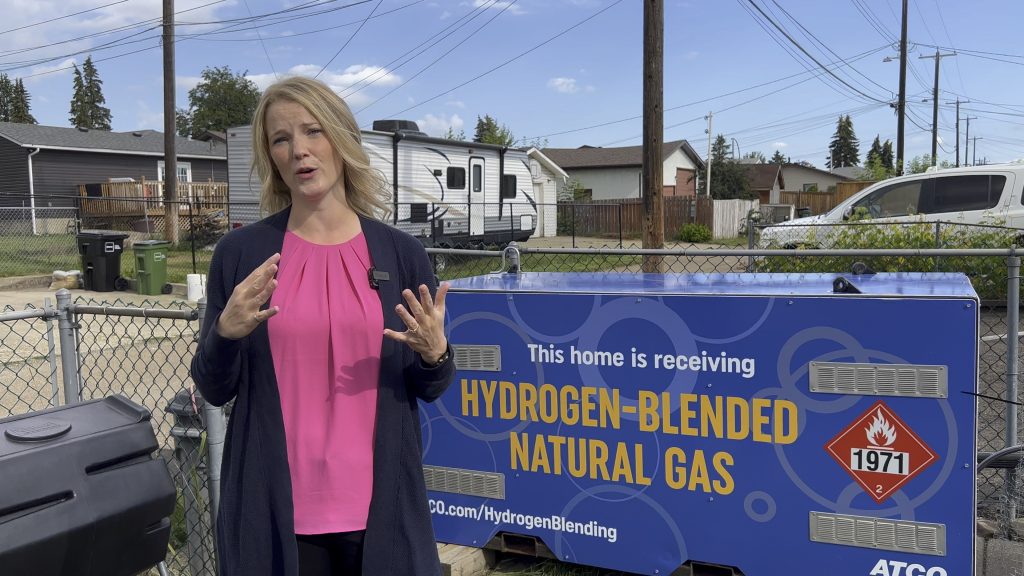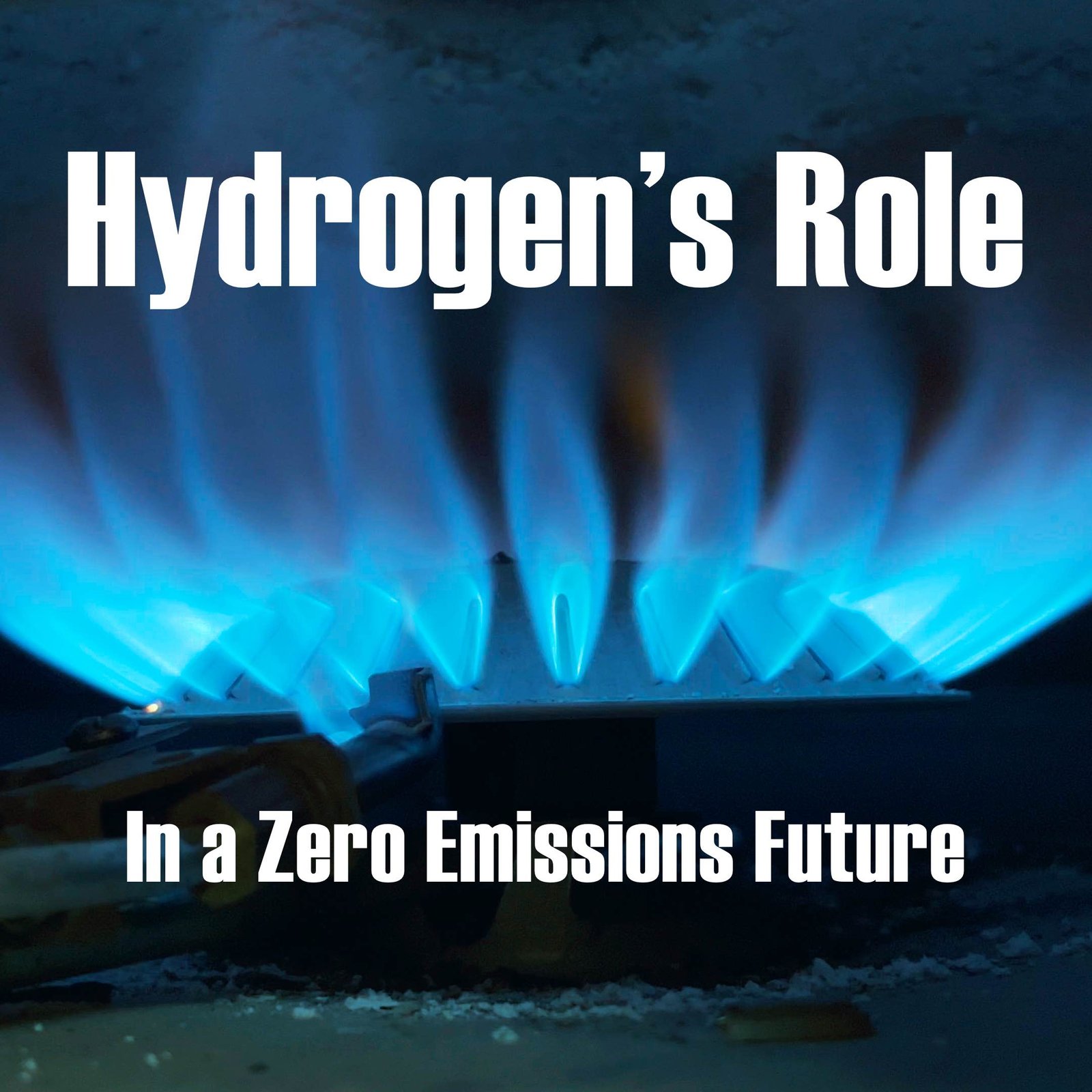Changing for Climate Series *
Hydrogen is the most abundant element in the universe and could be the key to unlocking a zero-emissions future.
In Edmonton, the biggest sources of greenhouse gas emissions come from the energy used to heat buildings and fuel our transportation and industry. According to Greg Caldwell, Director of Hydrogen at ATCO, 80% of that energy comes from liquid or gaseous fuels such as natural gas and gasoline.
“We need hydrogen to decarbonize that whole section of the energy pie,” says Caldwell.
Hydrogen gas is colourless, odourless, and tasteless. It’s highly flammable and when it burns the flame is almost invisible to the naked eye. On Earth, hydrogen most commonly exists in water and organic compounds – which are very stable under normal conditions.
It takes energy to produce hydrogen gas (H2), and how it’s produced is key to understanding how hydrogen fits into a net-zero economy.
“Hydrogen is a gas, it’s a zero-carbon energy carrier, and it allows us to deliver zero-carbon energy to our customers,” says Caldwell.
Hydrogen can be produced through various methods across Canada, based on unique regional strengths and natural resources.

Each production method is given a different colour to indicate how it’s created, including green, blue and grey to name a few.
The many colours of hydrogen
Green hydrogen is produced with emissions-free renewable energy, like wind or solar by electrolysis (water splitting).
Meanwhile, blue hydrogen is of particular interest in Alberta given the abundance of natural gas resources. The process to create it is similar to grey hydrogen, but up to 98% of the carbon by-product can be sequestered underground using carbon capture and storage (CCS) technology.
Grey hydrogen is made from natural gas or coal, with no carbon capture technology. This is the least environmentally friendly process since the carbon is released into the atmosphere.

To learn more about other ways to produce hydrogen, visit Natural Resources of Canada.
Planes, trains and trucks
Caldwell says the big opportunities for hydrogen to help on our journey to net-zero are in heavy industry, “things like steel production, fertilizer production and as a liquid fuel.”
It’s pretty easy to make cars electric: automakers are already investing more than $500 billion in hundreds of new models due on the market in the next few years.



But when it comes to heavy transport vehicles like trains, planes and ships, “direct electrification with batteries is challenging,” says Caldwell.
So, the City of Edmonton is working with surrounding municipalities and many companies in the Edmonton Region Hydrogen Hub to create infrastructure solutions for a hydrogen-powered future.
There is currently a pilot program to build a hydrogen fueling station in Edmonton and begin running hydrogen-powered trucks on a 700-kilometer route in Alberta.
ATCO is also working with Canadian Pacific to build fueling stations and pilot a locomotive with hydrogen fuel cells.
Hydrogen heating for homes
ATCO, a major natural gas utility, believes hydrogen can also be used to eliminate emissions from home heating. They’re running the first large-scale pilot program to provide homeowners with hydrogen-blended natural gas this year in Fort Saskatchewan, Alberta.
ATCO is blending 5% percent hydrogen into that community to test the idea of blending hydrogen with natural gas in home heating.
Renewable energy powers an electrolyzer to produce hydrogen on-site. In phase I of the pilot, 2,100 customers are receiving natural gas blended with 5% hydrogen.

The pilot will reduce emissions from home heating by up to 10%, but getting to net-zero will require much more.
“We have yet to do a 100% hydrogen community. However, we’ve started the work in producing an appliance that can use 100% hydrogen,” says Caldwell.
Gradient Thermal is a Calgary company that makes energy-efficient combined furnaces and hot water systems. They’re developing new models that run on pure hydrogen.
“We’re very confident that our network can use and deliver 100% hydrogen to communities in the future,” says Caldwell. And he says they are working on the idea of piloting a 100% hydrogen community.

The home heating challenge
Caldwell says there are only a few options for eliminating emissions for home and building heating. As we’ve mentioned natural gas won’t work in the long term since the emissions are released where the natural gas is burned in the home and capturing that carbon is very difficult.
“When you look around Canada, there’s the electrification solution, like a ground source or air source heat pump and then hydrogen or renewable other renewable gases,” says Caldwell.
Geothermal is already being used in many homes, which combines underground loops to harvest the heat of the Earth with a heat pump. In Edmonton, Blatchford has a district geoexchange heating system that replaces natural gas for home heating.
“I think both solutions have great pros and a few cons. Ultimately, if you’re that developer, it’s going to come down to cost and the carbon emissions; those are the two things you’re trying to balance,” says Caldwell.

